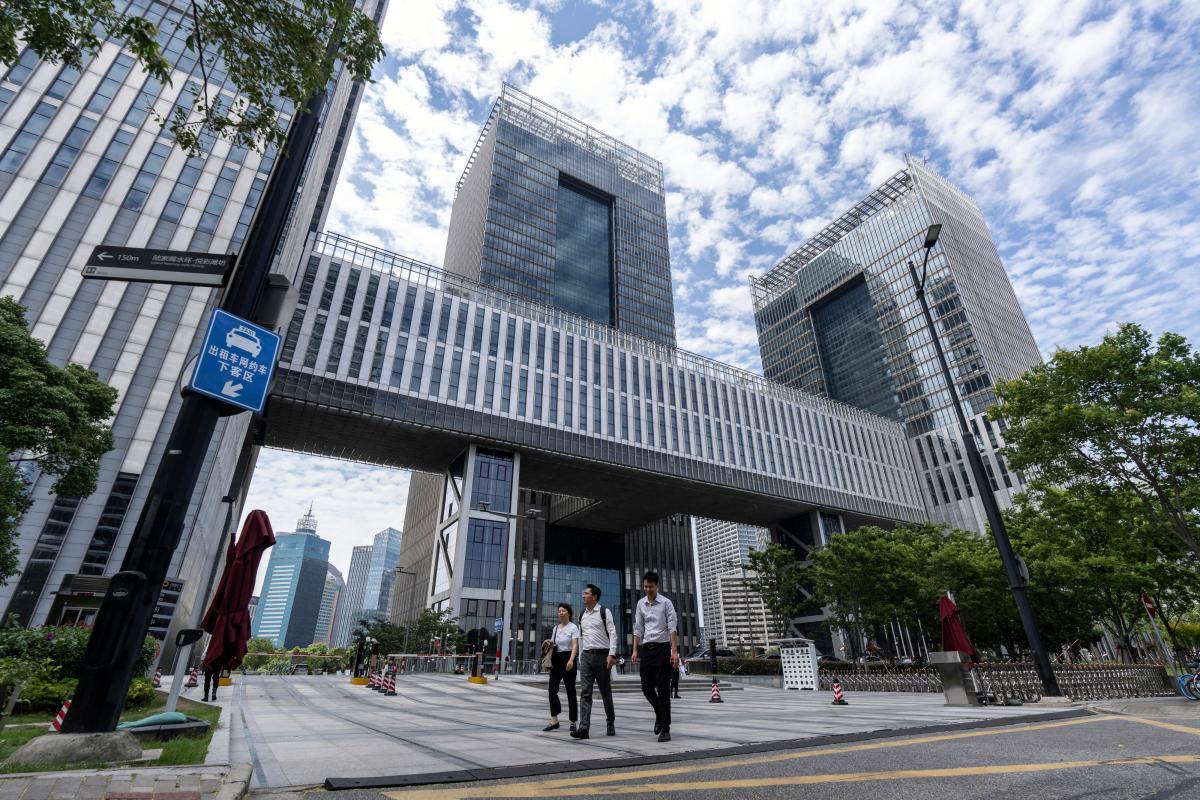(Sept 26): Asian stocks were poised to follow Wall Street lower as better-than-forecast US economic data clouded the outlook for future Federal Reserve (Fed) rate cuts.
Equity-index futures for Japan and Hong Kong pointed to losses, while those for Australia were little changed after the S&P 500 dropped for a third straight session, the longest slide in a month. The dollar gained and short-end Treasury yields rose after data showed US gross domestic product grew at the fastest pace in nearly two years.
Meanwhile, President Donald Trump advanced plans for US investors to buy TikTok’s US operations from its Chinese owner ByteDance Ltd, with officials setting a potential value of US$14 billion (RM59.05 billion).
After a more than US$15 trillion rebound in global equities from this year’s lows, traders face a wall of uncertainty. The Fed’s next policy step, a pivotal earnings season, and the growing risk of a US government shutdown are all weighing on sentiment. Strong GDP data underscored the economy’s resilience, but it also complicates the outlook for policy easing after the Fed cut rates last week.
“We agree that the economy is strong and growing,” said Chris Zaccarelli at Northlight Asset Management, “but a lot of that good news is already priced in. Where we have our largest concern is with valuations.”
Money markets slightly reduced bets on rate cuts after the GDP data, projecting about 40 basis points of Fed reductions before the year is over. Divisions within the Fed over the path of rates added to the uncertainty.
Fed Governor Stephen Miran said the US central bank risks damage to the economy by not moving rapidly to lower interest rates, dissenting against the decision to lower rates last week by a quarter percentage point, favoring a half-point cut.
“I don’t think the economy is about to crater,” Miran said Thursday on Bloomberg Surveillance. But given the risks, “I would rather act proactively and lower rates as a result ahead of time, rather than wait for some giant catastrophe to occur,” he said.
Michelle Bowman, the Fed’s top bank cop, said inflation is close enough to the central bank’s target to justify more rate cuts because the job market is weakening.
Fed Bank of Chicago President Austan Goolsbee expressed continued concern about tariff-driven inflation and pushed back against any call for “front-loading” multiple rate cuts. His Kansas City counterpart Jeff Schmid signaled the central bank may not need to cut again soon.
Fed Bank of Dallas President Lorie Logan said the US central bank should abandon the federal funds rate as its benchmark in implementing monetary policy, and consider an overnight rate tied to the more robust market for loans collateralised by US Treasuries.
In Asia, South Korea is moving to open its foreign-exchange market on a 24-hour basis and ease restrictions on won trading between non-residents, the Finance Ministry said.
Elsewhere, Citigroup Inc has moved close to 1,000 tech jobs to India’s business support centers following cuts to its workforce in China, according to people familiar with the matter.
Attention now turns to the Fed’s preferred inflation gauge — the personal consumption expenditures price index. A report on Friday is forecast to show the PCE index excluding food and energy rose 0.2% in August, compared with 0.3% in July. On an annual basis, the so-called core measure is seen holding at a still-elevated 2.9%.
In commodities, oil fluctuated in choppy trading as tensions between Russia and Nato intensified, while silver rose above US$45 an ounce for the first time in 14 years and gold neared another record high. The crypto slump intensified ahead of a US$22 billion options expiry.
Uploaded by Isabelle Francis

